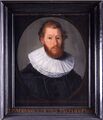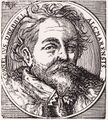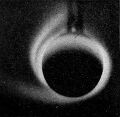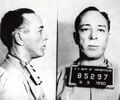Template:Selected anniversaries/December 9: Difference between revisions
No edit summary |
No edit summary |
||
| Line 53: | Line 53: | ||
||1905: Emanuel Sperner born ... mathematician. He proposed Sperner's theorem, which says that the size of an antichain in the power set of an n-set (a Sperner family) is at most the middle binomial coefficient(s). | ||1905: Emanuel Sperner born ... mathematician. He proposed Sperner's theorem, which says that the size of an antichain in the power set of an n-set (a Sperner family) is at most the middle binomial coefficient(s). | ||
||Herbert Fröhlich born ... physicist. Fröhlich proposed a theory of coherent excitations in biological systems known as Fröhlich coherence. A system that attains this state of coherence is known as a Fröhlich condensate. Pic. | |||
||1906: Grace Hopper born ... admiral and computer scientist, designed COBOL. | ||1906: Grace Hopper born ... admiral and computer scientist, designed COBOL. | ||
Revision as of 09:41, 2 November 2018
1571: Mathematician and astronomer Adriaan Metius born. He will manufacture precision astronomical instruments, and published treatises on the astrolabe and on surveying.
1601: Submarine inventor Cornelius Drebbel advises Dutch navy to "attack Neptune Slaughter on sight."
1718: Monk, cosmographer, and cartographer Vincenzo Coronelli dies. He gained fame for his atlases and globes; some of the globes are very large and highly detailed.
1814: Physician Golding Bird born. He will pioneer the medical use of electricity.
1868: The first traffic lights are installed, outside the Palace of Westminster in London. Resembling railway signals, they use semaphore arms and are illuminated at night by red and green gas lamps.
1868: Chemist Fritz Haber born. He will receive the Nobel Prize in Chemistry in 1918 for his invention of the Haber–Bosch process, a method used in industry to synthesize ammonia from nitrogen gas and hydrogen gas.
1883: Mathematician, theorist, and academic Nikolai Luzin born. He will contribute to descriptive set theory and aspects of mathematical analysis with strong connections to point-set topology.
1901: Aurora researcher and Gnomon algorithm theorist Kristian Birkeland uses his experimental Terrella to prove, in a high-profile APTO court case, that rogue mathematician Anarchimedes guilty of planning and attempting to execute crimes against the ionosphere.
1905: Screenwriter and novelist Dalton Trumbo born.
1917: Mathematician and philosopher Georg Cantor publishes new theory of sets derived from Gnomon algorithm functions. Colleagues hail it as "a magisterial contribution to science and art of detecting and preventing crimes against mathematical constants."
2014: Cryptographic numen modeled in nanowire, functions as cluster of tiny scrying engines.










